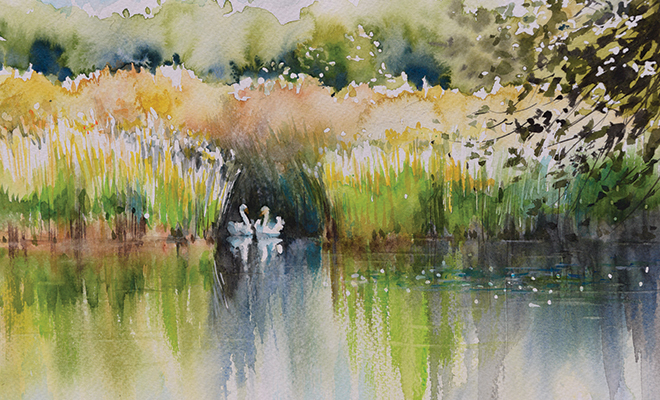
Curating your personal art collection
Collecting art and buying art seem like the same activity but in reality they’re drastically different pursuits. The practice of collecting art moves the individual art lover beyond the simple purchase of a piece based on immediate attraction into a lifetime pursuit.
Collecting springs from personal taste and the transactions are more of a purposeful, long-term commitment that is based on research and preparation. Anyone can collect art as long as she possesses passion for and appreciation of fine art, the motivation to research, and the desire to collect.
A beginning art collector, as well as a seasoned one, must be able to research and assess if the piece will be a meaningful addition to their collection. Begin with finding a piece of art that you are attracted to; this part is extremely subjective. Once you’ve established your attraction for the piece, your fact-finding strategy should begin with five questions.
Are you in love with the piece or is it merely infatuation?
It’s important to take time to think about your initial reaction to the piece. You want to consider how it will fit in your current collection along with how and where you will display it in your personal space. Regardless of whether you’re an experienced collector or beginning to hone your skills, never buy a piece meant for a collection on a whim.
Who is the artist?
Diving into the research will help you assess if the work can be considered collectible. Fundamental research on the artist includes essentials such as the artist’s birth date and death date, if applicable. Discern where the artist lives and works, and identify the galleries, museums or institutions where the artist has been exhibited. Determine if corporate, private or public collectors own the artist’s work. What is her professional history? Is she a professor or the author of publications? Has she been mentioned in print or online publications? Research academic history, awards, grants or honors that the artist has received, and determine the organizations the artist belongs to. Once you have this information you can better understand the artist’s career and learn how noteworthy their accomplishments are. This basic data should be available through an artist’s website or through the gallery.
How significant is the art?
The range of the artist’s work will determine the answer to this question. Viewing several pieces of the artist’s work or seeing it in the context of an exhibition will provide an understanding of how the piece you’re interested in compares to others. If portraits are the bulk of the artist’s work and the piece you’re interested in is a still life, then you know that subject matter is not what the artist is known for. The mainstream choice isn’t always the smart one; go with your gut and always buy an original.
Is the asking price fair and comparable to similar pieces?
This is an important consideration in deciding if this piece is collectible for you. Research records of recent public and private sales of comparable works of art. More specifically, look for auctions, online sales or websites where the artist’s work is sold; how much has it sold for in the past? Online subscription databases are a tool that can indicate if the artist has achieved recognition and respect within the art community.
What is the art work’s provenance?
Provenance includes the work’s history and documentation. This question is pivotal when you’re determining if the piece is a good long-term investment because good provenance and documentation increase market value and collectability. Start by asking the seller if the piece has been previously exhibited, if it has won awards or has been pictured in publications. Research online to document this information and print it; obtain documentation from the artist or gallery owner, such as a catalog, that may have the artist’s signature. Having these documents will prove to a future buyer exactly where the work has been exhibited and written about and will enhance the significance and value of the piece.
Your collection should be a reflection of your taste with an eye toward what may become collectible. Artists that are collectible should have a proven record either on the art market or through their exhibition history and they should show promise of continuing innovation. Find artists with a reputation in your area through publications that include reviews by local art critics. Significant artists in the area are often written about. Many artists are also fine art professors, so visit exhibits at colleges and universities in your city; you may even find a promising student whose work you enjoy. Visit local galleries and talk with the owners about the artists they represent. Ask who is up and coming and who is established.
Through research and knowledge, you will become a savvy collector, the curator of an innovative, cohesive body of art that represents an ongoing story. ■
Sources: artbusiness.com, blouinartinfo.com and paddle8.com.







